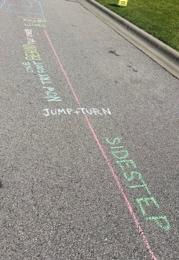Anterior Cruciate Ligament (ACL) Reconstruction Return to Sport Guidelines
- All Care Therapies

- Oct 20, 2022
- 3 min read

Background Information
- An ACL injury is the most common athletic knee injury, with about 250,000 individuals
suffering from an ACL rupture each year in the United States alone. (see notes 1 & 2)
- Females are more likely to suffer this injury than males due to females being more quad
dominant during landing and stop-jumping activities, as well as tending to land in a
collapsing pattern that causes increased genu valgum (knock-knees). (see note 3)
- Surgical reconstruction of the ACL is usually performed about 3-6 weeks after the injury
occurs to allow time for inflammation to subside and full range of motion of the knee
(flexion and extension) to be restored. (see note 3)
- Graft types used during reconstruction include autografts (tissue taken from another part
of the patient’s body) and allografts (tissue harvested from a cadaver). The most
commonly used grafts include bone-patellar tendon-bone autograft, hamstring tendon
autograft, or quadriceps tendon autograft. (see notes 4 & 5)
Research (see notes 1 & 2)
- Research has shown that rehabilitation performed before having surgery has been
associated with better outcomes post-surgery. Additionally, return to sport (RTS) is not
recommended until 9-12 months after surgery. It has been found that the re-injury rate
was reduced by 51% for each month return to sport was delayed until 9 month after
surgery. Another finding is that athletes who failed any of the return to sport criteria were
more likely to sustain a re-injury (38%), compared to those who passed all of the return
to sport criteria (6%). Research also shows that pivoting sport athletes (soccer,
basketball, etc.) who passed specific criteria prior to RTS have a 4-6x lower risk for re-
injury.
RTS Testing (see notes 1, 2, & 5)
- When conducting RTS testing, this should include strength testing, hop testing,
psychological readiness, and agility tests.
- For strength testing, the quadriceps are usually tested. A handheld dynamometer, such
as the MicroFET2, can be used to do so. A limb symmetry index (ratio used to compare
an affected leg to the unaffected leg) of greater than or equal to 90% is ideal. To
calculate, limb symmetry index = (Involved/Uninvolved) x 100.
- For single leg hop testing, the four most commonly used tests are the single hop for
distance, triple hop for distance, the crossover hop for distance, and a 6 meter hop for
time. A limb symmetry index of greater than or equal to 90% is the goal.

- For psychological readiness, the Knee Outcome Survey - Activities of Daily Living Scale
can be used, and a score of greater than or equal to 90 is ideal.
- For agility, the running T test could be used, with a goal for the patient to be able to
perform the test in less than 11 seconds.

Additional Things to Consider with RTS Testing (see note 5)
- It has been shown that a patient who completed 6 months of rehab incorporating
jumping and agility tasks were almost 8x more likely to RTS compared to those who did
not. Although there is a lack of research to determine when it is best to perform RTS
testing, at least 9 months after surgery is suggested. Additionally, even if the patient
passes the commonly used single-leg hop tests, additional asymmetries may be present
if medial/lateral and rotational hop tests are implemented.
Helpful Resources for ACL Reconstruction Rehabilitation
- Massachusetts General Brigham Sports Medicine Rehab Protocol for ACL
Reconstruction, which includes a Return to Running Program and an Agility and
Plyometric Program.
- Link:https://www.massgeneral.org/assets/mgh/pdf/orthopaedics/sports-
medicine/physical-therapy/rehabilitation-protocol-for-acl.pdf
- Boston Sports Medicine & Research Institute ACL Injury Overview, which also includes
rehabilitation guidelines and exercise examples.
-
Link: https://www.bostonsportsmedicine.com/pdf/protocols/acl_reconstruction__re
hab_protocol.pdf
References
1. Brinlee AW, Dickenson SB, Hunter-Giordano A, Snyder-Mackler L. ACL reconstruction
rehabilitation: clinical data, biologic healing, and criterion-based milestones to inform a
return-to-sport guideline. Sports Health. 2022;14(5):770-779.
doi:10.1177/19417381211056873
2. Filbay SR, Grindem H. Evidence-based recommendations for the management of
anterior cruciate ligament (ACL) rupture. Best Pract Res Clin Rheumatol. 2019;33(1):33-
47. doi:10.1016/j.berh.2019.01.018
3. Houglum PA. Therapeutic Exercise for Musculoskeletal Injuries, 4th edition. Champaign,
IL: Human Kinetics; 2016.
4. Paschos NK, Howell SM. Anterior cruciate ligament reconstruction: principles of
treatment. EFORT Open Rev. 2016;1(11):398-408. doi:10.1302/2058-5241.1.160032
5. Gokeler A, Dingenen B, Hewett TE. Rehabilitation and return to sport testing after
anterior cruciate ligament reconstruction: where are we in 2022? Arthrosc Sports Med
Rehabil. 2022;4(1):e77-e82. doi:10.1016/j.asmr.2021.10.025




Comments